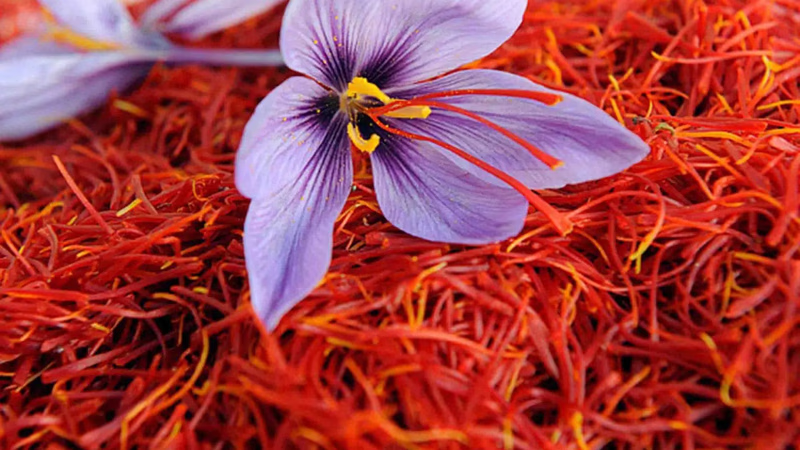
Saffron spice: A valuable commodity in Middle East trade.
Saffron is one of the spices. Saffron, which is obtained from the saffron flower, is known as one of the most expensive and famous spices in the world. This spice is usually used to add flavor, color and aroma to foods. Also, saffron has been noted for its antioxidant, anti-inflammatory and anti-cancer properties. Iran is currently the largest producer of saffron in the world and produces the largest amount of saffron. Saffron plays a very important role in Iranian cooking and is widely used in Iranian dishes.
Spain is also one of the largest producers of saffron in the world. Spanish saffron is known as \"La Mancha saffron\" and is known as one of the best saffron in the world. Saffron is also widely used in countries such as India, Afghanistan, Tajikistan and Persian Gulf countries. These countries traditionally use saffron in their cooking. Also, saffron is used in many European and Middle Eastern countries and is gradually known as a popular spice all over the world.
Countries such as Iran, Spain, India and Persian Gulf countries are among the largest exporters of saffron in the world. These countries export their saffron to other countries. Some countries need to import saffron. Countries with less saffron production or high saffron consumption meet their needs through saffron imports. Saffron is one of the most expensive spices in the world and its price is influenced by factors such as quality, type, production area, supply and demand. Changes in the price of saffron can have an impact on its international trade .
For the international trade of saffron, there are standards and criteria that are used to determine the quality and specifications of saffron. Some of these standards include ISO 3632 about the quality of saffron and ISO 3632-2 for determining the color of saffron. Saffron is used in various industries including food, cooking, cosmetics and health industries. The international trade of saffron is important as a result of the various uses of this spice. International trade of saffron can act as a way for economic exchange and business opportunities between different countries and regions of the world.
Before starting your export business, do a thorough research about your target market. Knowing the needs and demand of the market, competitors, export laws and regulations and the specifications demanded in the target market is of particular importance. Make sure that your saffron meets the necessary standards such as ISO 3632. These standards include things like color, taste, moisture and other characteristics of saffron. Quality approvals such as HACCP and international certifications can also give you an advantage in foreign markets.
Conducting thorough research on different markets and countries can help you identify target markets. Examining needs, demand, competitors, export laws and regulations, consumer culture and tastes and other important factors in different markets can be effective in choosing target markets. Examining the competitors and the competition situation in the target markets is important. It should be determined whether the target markets are saturated or unsaturated and whether there are strong competitors. Conducting a SWOT (Strengths, Weaknesses, Opportunities, and Threats) analysis can help identify opportunities and challenges related to target markets.
Connecting with local experts working in the target countries can be very useful. They can help you better understand your target markets, connect with local people and local needs. Attending trade fairs and events related to the saffron industry can be an opportunity to identify target markets and communicate with related people and companies. These events allow you to explore new markets and meet industry people. Advice from international export and marketing experts can help you identify target markets and determine effective export strategies.
Proper packaging of saffron is very important to satisfy customers. Use quality boxes and packaging and make sure the saffron is protected during shipping. To export saffron, you may need to provide documentation such as commercial invoices, quality certificates, authenticity certificates and export certificates. Check the relevant export requests carefully and provide the necessary information correctly and completely. Establishing business relations with possible partners in the target countries and creating commercial and distribution networks can help you in exporting saffron. Also, using different marketing methods such as attending exhibitions, online advertising and local advertising methods can help your marketing.
-

Cumin trade plays a significant role in the global spice market, with major producers including India, Nigeria, Bangladesh, China, and Thailand. India stands out as the largest exporter, while the United States, Germany, Canada, and Middle Eastern countries are key importers. The competitive landscape of cumin trade involves various marketing strategies such as advertising and quality improvement. Technological advancements in production and packaging are also influencing market dynamics. Cumin is not only valued for its culinary uses but also for its medicinal properties, making it popular in food and cosmetic industries. Its demand is driven by its flavoring capabilities and health benefits. Factors affecting cumin trade include weather conditions, pest issues, trade regulations, and global supply-demand fluctuations. Prices are subject to change based on these variables and seasonal harvests. For detailed insights into current trends and statistics in cumin trade, specialized sources like the WTO or WHO can be consulted.
-
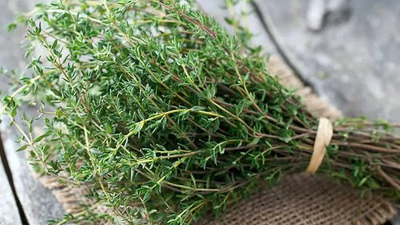
Thyme is a versatile spice with significant export potential, widely used in cooking and health products. Its antibacterial properties enhance food safety, making it valuable in the food industry. Exporting thyme requires understanding local and international regulations, identifying target markets, and establishing relationships with buyers. Key producing countries include Türkiye, China, India, and Iran, while major consumer markets are in America, Germany, France, and India. Successful thyme export involves proper product preparation, packaging for international shipping, and compliance with phytosanitary regulations. Engaging legal and financial advisors can facilitate navigating the complexities of international trade.
-
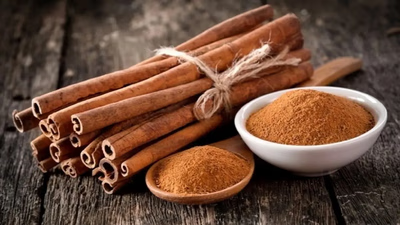
Cinnamon, a globally popular spice, is derived from the inner bark of cinnamon trees and is extensively used in various culinary applications. Major producers include Sri Lanka, China, Vietnam, Indonesia, and Madagascar, with global production estimated at 30-35 thousand tons annually. Key exporters are Indonesia, China, Vietnam, and Sri Lanka, primarily shipping to Europe (Netherlands, Germany, UK), North America (USA), and the Middle East (Saudi Arabia, UAE). Market dynamics such as quality standards, pricing, demand variations, and health regulations significantly influence cinnamon trade. Compliance with international trade laws—including customs tariffs and sanitary regulations—is crucial for successful export operations. Quality assurance standards like ISO 9001 and HACCP are essential for meeting market requirements. Additionally, sustainable practices in resource management are increasingly important in the cinnamon industry. The spice is valued not only for its flavor but also for its medicinal properties; it has antiseptic qualities and contains anti-inflammatory compounds beneficial for health.
Entering the cinnamon market requires thorough research on suppliers and target markets to establish reliable business relationships. Businesses must decide between wholesale or retail operations while ensuring high-quality products with appealing packaging. Effective marketing strategies through online platforms and trade events can enhance visibility in a competitive landscape. Continuous monitoring of market performance is vital for adapting to consumer preferences and competition.
-
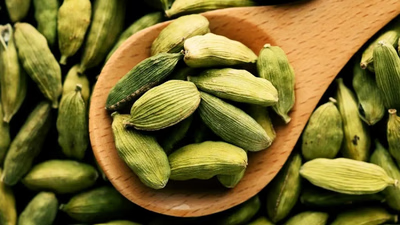
Cardamom, a highly valued spice from the ginger family, is primarily cultivated in India and Sri Lanka, with significant production in Thailand, Vietnam, and Guatemala. It is used extensively in cooking and beverages, known for its flavor and medicinal properties. The spice market sees active trade of cardamom, which can be exported in bulk or packaged. Factors influencing its price include quality, type (green or black), and geographical conditions affecting production. The demand for cardamom has surged due to its culinary versatility and health benefits. Quality control is crucial in the cardamom trade; traders must ensure high standards through careful selection based on appearance, aroma, and moisture content. Establishing reliable relationships with producers is essential for consistent supply. Effective marketing strategies are necessary for selling cardamom, utilizing online platforms and trade shows to reach customers. Proper storage and distribution practices are vital to maintain quality post-purchase.
-

Saffron, derived from the saffron flower, is one of the world"s most expensive spices, renowned for its flavor, color, and aroma. It boasts antioxidant and anti-inflammatory properties and is primarily produced in Iran, followed by Spain, India, and other countries. The spice"s international trade is influenced by quality standards such as ISO 3632 and market demand. Countries with lower saffron production often rely on imports to meet consumption needs. Understanding market dynamics, including competitors and regulations, is crucial for successful saffron exportation. Conducting thorough research on target markets helps identify opportunities and challenges. Engaging with local experts and attending industry trade fairs can enhance market insights and networking opportunities. Proper packaging and documentation are essential for customer satisfaction and compliance with export requirements. Establishing business relationships in target countries can facilitate distribution networks while diverse marketing strategies can boost visibility.
-
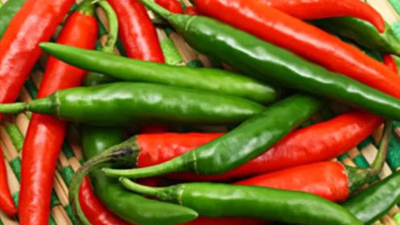
Pepper is a crucial spice in global trade, with production concentrated in countries like India, Vietnam, and Brazil. The annual global output ranges from 4-5 million tons, primarily exported to North America, Europe, Asia, and the Persian Gulf. The trade dynamics are influenced by various factors including quality standards, market demand, and consumer perceptions. Different types of pepper—black, white, red—each have unique properties and uses in the food industry. Quality assurance is vital; pepper must meet international standards for purity and packaging to ensure longevity during transport. Establishing strong relationships with producers and traders is essential for success in this competitive market. Innovations in cultivation and processing can enhance product value. Effective marketing strategies such as brand building and market analysis are necessary to navigate pricing and demand fluctuations.
Compliance with export regulations is critical to avoid legal issues. Understanding the specific needs of target markets will facilitate better trading outcomes.
-

Ginger holds a significant position in the global spice trade, with major producers including India, Nigeria, China, and Thailand. The market for ginger has expanded due to its flavoring and health benefits, leading to increased demand across various industries such as food and beverages. As a versatile spice, ginger is utilized in baking, confectionery, and nutritional supplements. The growth of the ginger market is attributed to rising consumer awareness of its health properties and improved international trade infrastructure. However, challenges such as climate change impacts on productivity and trade regulations can affect supply chains. India stands out as the largest exporter of ginger globally, while other countries like Thailand and Brazil also contribute significantly to exports. The price of ginger fluctuates based on supply-demand dynamics, weather conditions, and economic factors. Additionally, specific regulations govern the export-import process of ginger, including quality standards related to moisture levels and packaging requirements. Understanding these factors is crucial for businesses engaged in the ginger trade.







